Hand & Wrist
- Anatomy
- Conditions
- Procedures
Hand Anatomy
The human hand is made up of the wrist, palm, and fingers and consists of 27 bones, 27 joints, 34 muscles, over 100 ligaments and tendons, and many blood vessels and nerves.
The hands enable us to perform many of our daily activities such as driving, writing and cooking. It is important to understand the normal anatomy of the hand to learn more about diseases and conditions that can affect our hands.
Bones
The wrist is comprised of 8 carpal bones. These wrist bones are attached to the radius and ulna of the forearm to form the wrist joint. They connect to 5 metacarpal bones that form the palm of the hand. Each metacarpal bone connects to one finger at a joint called the metacarpophalangeal joint or MCP joint. This joint is also commonly referred to as the knuckle joint.
The bones in our fingers and thumb are called phalanges. Each finger has 3 phalanges separated by two interphalangeal joints, except for the thumb, which has only 2 phalanges and one interphalangeal joint.
The first joint close to the knuckle joint is called the proximal interphalangeal joint or PIP joint. The joint closest to the end of the finger is called the distal interphalangeal joint or DIP joint.
The MCP joint and the PIP joint act like hinges when the fingers bend and straighten.
Soft tissues
Our hand bones are held in place and supported by various soft tissues. These include: articular cartilage, ligaments, muscles and tendons.
Articular cartilages are smooth material that act as shock absorbers and cushion the ends of bones at each of the 27 joints, allowing smooth movement of the hand.
Muscles and ligaments function to control the movement of the hand.
Ligaments are tough rope-like tissues that connect bones to other bones, holding them in place and providing stability to the joints. Each finger joint has two collateral ligaments on either side, which prevents the abnormal sideways bending of the joints. The volar plate is the strongest ligament in the hand. It joins the proximal and middle phalanx on the palm side of the joint and prevents backwards bending of the PIP joint (hyperextension).
Muscles
Muscles are fibrous tissues that help produce movement. Muscles work by contracting.
There are two types of muscles in the hand, intrinsic and extrinsic muscles.
Intrinsic muscles are small muscles that originate in the wrist and hand. They are responsible for fine motor movement of the fingers during activities such as writing or playing the piano.
Extrinsic muscles originate in the forearm or elbow and control the movement of the wrist and hand. These muscles are responsible for gross hand movements. They position the wrist and hand while the fingers perform fine motor movements.
Each finger has six muscles controlling its movement: three extrinsic and three intrinsic muscles. The index and little finger each have an extra extrinsic extensor.
Tendons
Tendons are soft tissues that connect muscles to bones. When muscles contract, tendons pull the bones causing the finger to move. The extrinsic muscles are attached to finger bones through long tendons that extend from the forearm through the wrist. Tendons located on the palm side help in bending the fingers and are called flexor tendons, while tendons on top of the hand help in straightening the fingers, and are called extensor tendons.
Nerves
Nerves of the hand carry electrical signals from the brain to the muscles in the forearm and hand, enabling movement. They also carry the senses of touch, pain and temperature back from the hands to the brain.
The three main nerves of the hand and wrist are the ulnar nerve, radial nerve and median nerve. All three nerves originate at the shoulder and travel down the arm to the hand. Each of these nerves has sensory and motor components.
Ulnar Nerve: The ulnar nerve crosses the wrist through an area called Guyon’s canal and branches to provide sensation to the little finger and half of the ring finger.
Median Nerve: The median nerve crosses the wrist through a tunnel called the carpal tunnel. The median nerve provides sensation to the palm, thumb, index finger, middle finger, and part of the ring finger.
Radial Nerve: The radial nerve runs down the thumb side of the forearm and provides sensation to the back of the hand from the thumb to the middle finger.
Blood Vessels
Blood vessels travel beside the nerves to supply blood to the hand. The main arteries are the ulnar and radial arteries, which supply blood to the front of the hand, fingers, and thumb.
The ulnar artery travels next to the ulnar nerve through the Guyon’s canal in the wrist.
The radial artery is the largest artery of the hand, traveling across the front of the wrist, near the thumb. Pulse is measured at the radial artery.
Other blood vessels travel across the back of the wrist to supply blood to the back of the hand, fingers and thumb.
Bursae
Bursae are small fluid- filled sacs that decrease friction between tendons and bone or skin. Bursae contain special cells called synovial cells that secrete a lubricating fluid.

Wrist Sprain
Injuries caused due to stretching or tearing of the ligaments in the wrist are called wrist sprains. These injuries are usually caused by a fall during daily activities or sports activities. Sprains can range from mild to severe based on the extent of injury to the ligament.
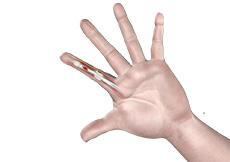
Flexor Tendon Injuries
Tendons are the bands of fibrous connective tissue that connect muscles to bone. Tendons aid in movement of the fingers, hand and all other body parts.
There are two types of tendons present in the hand- extensor tendons and flexor tendons.
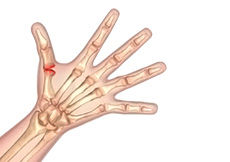
Arthritis of the Hand and Wrist
Arthritis is an inflammatory condition of the joints. There are several types of arthritis and the most common type is osteoarthritis or wear-and-tear arthritis. Arthritis affects various joints in the body and the arthritis in the hand affects the joint at the base of the thumb. Arthritis may also affect the joints of other digits and the symptoms include swelling, pain, stiffness and malformation, all of which interfere with the use of the hand.
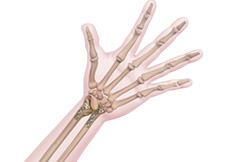
Wrist Fracture
The wrist is comprised of two bones in the forearm, the radius and ulna, and eight tiny carpal bones in the palm. The bones meet to form multiple large and small joints. A wrist fracture refers to a break in one or more of these bones.
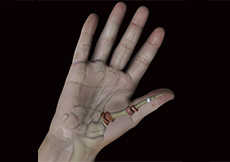
Arthritis of the Thumb
Arthritis is an inflammatory condition of the joints. There are several types of arthritis; the most common type is osteoarthritis or wear-and-tear arthritis that affects the joint at the base of the thumb. Thumb arthritis is more common in women than men, and usually occurs after the age of 40 years. Patients who have arthritis of the fingers may have swelling, pain, stiffness, and malformation all of which interfere with the use of the hand.

Carpal Tunnel Syndrome
Carpal Tunnel Syndrome is a common, painful, progressive condition that is caused by compression of the median nerve at the wrist area.
Common symptoms of carpal tunnel syndrome include numbness and tingling sensation in all the fingers except the little finger; pain and burning sensation in hand and wrist that may radiate up the arm and elbow; and weakness in hand with diminished grip strength.
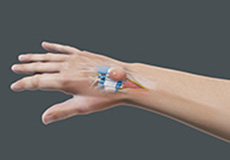
Ganglion Cyst of the Wrist
Ganglion cysts are swellings that most commonly develop along the tendons or joints of wrists or hands. They can be found either at the top of the wrist, palm side of the wrist, end joint of a finger or at the base of a finger. Ganglion cyst is not cancerous and will not spread to the other parts of the body. It looks like a water balloon on a stalk and contains a clear fluid or jelly material. Ganglion cysts can be found in people of all ages.

Trigger Finger
The ability to bend the fingers is governed by supportive tendons that connect muscles to the bones of the fingers. The tendons run along the length of the bone and are kept in place at intervals by tunnels of ligaments called pulleys. When the fingers bend, or are straightened, a slippery coating called tenosynovium helps the tendons smoothly glide through the ligaments with reduced friction.
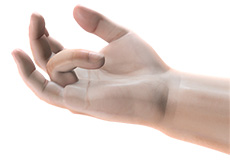
Dupuytren’s Contracture
Dupuytren’s Contracture is a hand condition where thickening of the underlying fibrous tissues of the palm causes the fingers to bend inward. Patients with this condition are unable to fully straighten the affected fingers.
It is caused from excessive production of collagen which is deposited under the skin. It commonly occurs in the ring finger and little finger.

Peripheral Nerve Repair
The peripheral nerves are the nerve fibers that compose the area from head to toe, connecting the brain and spinal cord with the rest of the body parts. Nerves transmit electrical impulses and signals to and from the brain. Peripheral nervous system disorders interrupt the transmission of signals and weaken the sensory and motor nerve functions.
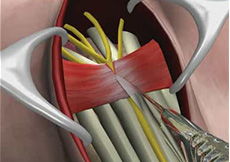
Carpal Tunnel Release Surgery
If conservative treatment options fail to resolve the condition your surgeon may recommend surgical procedure.
Carpal tunnel syndrome can be treated with carpal tunnel release surgery. Traditional surgery involves up to a 2- inch incision in the palm and wrist area, whereas endoscopic surgery involves one or two half-an-inch incisions and the use of an endoscope.
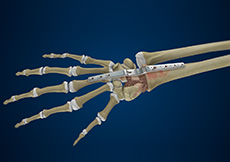
Total Wrist Arthrodesis
Arthrodesis is the surgical immobilization of a joint by the fusion of the adjacent bones.
Total wrist arthrodesis, also known as wrist fusion, is a surgical procedure in which the wrist joint is stabilized or immobilized by fusing the forearm bone (radius) with the small bones of the wrist.
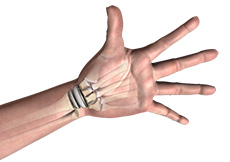
Wrist Joint Replacement
Wrist joint replacement surgery, also referred to as total wrist arthroplasty, involves replacement of a severe arthritic wrist joint with an artificial joint made of metal and plastic components. It relieves pain and restores function when conservative treatment fails to provide relief.

Artificial Finger Joint Replacement
Finger joints are essential for many activities, and arthritis in this area can cause significant joint damage and deformity. Artificial finger joint replacement is a surgical procedure that involves the removal of an arthritic or damaged finger joint and replacement with an artificial prosthesis.
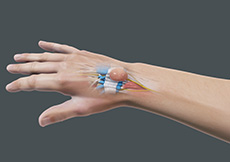
Ganglion Cyst Removal
Ganglion cysts are fluid-filled lumps that most commonly develop along the tendons or joints of wrists or hands. It looks like a water balloon on a stalk and contains a clear fluid or gelatinous material.
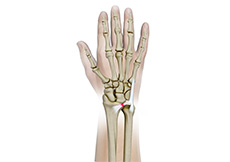
TFCC Repairs
TFCC injuries can be repaired by open or arthroscopic methods.
Arthroscopic TFCC repair: The arthroscopic technique is a less invasive procedure where 2 to 3 incisions of about 5 mm each are made in the wrist, through which a telescope (arthroscope) and other surgical instruments are passed.
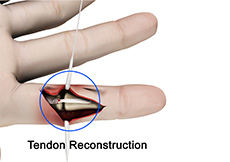
Tendon Repairs
Coming soon
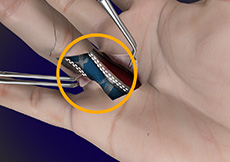
Partial Fasciectomy
Coming soon
